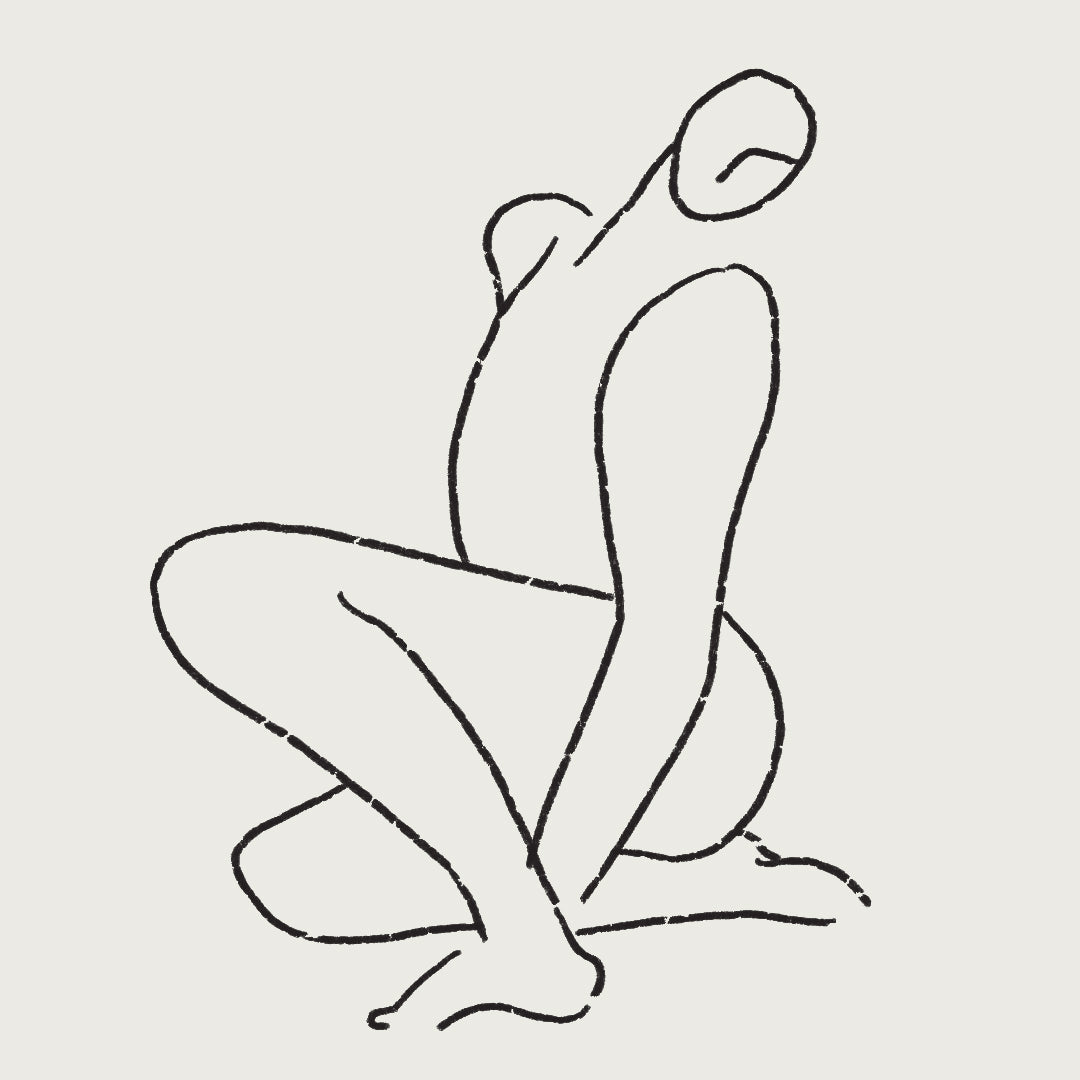At a glance: PMDS - How is it different from PMS? |
From ovulation to menstruation and from menstruation to ovulation: our hormone levels change relentlessly and we change with them. Even though each of these phases has its own laws, our cycle at best shapes only one facet of our reality. It doesn't have to be the one driving force behind our emotions - or cause us to inevitably feel bad before our period [1].
It can be a different story if we regularly find ourselves in a slump before our period. This may be due to premenstrual syndrome (PMS), for which more than 200 possible symptoms are known, ranging from irritability to headaches and exhaustion.
A particularly severe form of PMS is called premenstrual dysphoric syndrome (PMDS). It is characterized primarily by psychological complaints that can resemble depression and only occur in the second half of the cycle. It is assumed that approximately 5 to 8 percent of women are affected [2].
While PMDS was not taken seriously for a long time, it is now recognized as a depressive disorder [3]. Studies show that it may be associated with an increased risk of suicide [4].
The symptoms of PMDS
In PMDS, just like PMS, the symptoms occur in the luteal phase, i.e. between ovulation and menstruation. They are often strongest in the last days before menstruation.
The basis for a diagnosis of PMDS is the following test, which distinguishes between core symptoms and other symptoms [5]::
Core symptoms
- Depressed mood or hopelessness
- Anxiety or tension
- Mood instability
- Irritability / anger outbursts
Other symptoms
- Lethargy / fatigue
- Change in appetite / cravings
- Insomnia or increased need for sleep
- Feeling of being overwhelmed / loss of control
- Declining interest in usual activities
- Concentration problems
- Other physical symptoms, such as breast tenderness, bloating in the abdomen
A medical consultation is the first step towards a possible diagnosis of PMS. This clarifies whether at least five of the symptoms have occurred in the second phase of the cycle in the majority of cycles in the last year. At least one of the symptoms that occurred must be a core symptom.
Furthermore, it is clarified, among other things, whether another physical or mental illness can be ruled out and to what extent the symptoms restrict your daily life [5].
It is often recommended to keep a mood diary for at least three cycles. In addition to the medical aspect, it can help you to observe and get to know yourself and your body even more closely.
If you think you may be suffering from the syndrome, you should always seek medical advice.
PMDS: causes and effects
In particularly severe cases, the symptoms strongly affect our well-being as early as ovulation. Affected women report that in extreme cases there is only one "good week" left in the month [6].
Due to the regular changes in mood and behavior, the syndrome can make us feel like "Dr. Jekyll and Mr. Hyde". In the long run, this can not only be a stress test for one's own psyche, but also for the cooperation in the social environment. At work, PMDS can often lead to restrictions as well.
The exact cause of the syndrome is still unknown. In most cases, the blood count of affected individuals, including hormone levels, does not show any abnormalities. One of the hypotheses is therefore that the organism of women with PMDS reacts more strongly to the body's own sex hormones [7].
Help with PMDS: treatment options
A specific form of antidepressants called selective serotonin reuptake inhibitors (SSRIs) has been shown to be effective in the treatment of PMDS [8]. Sometimes these are prescribed only for the second phase of the cycle.
The contraceptive pill can also relieve symptoms, depending on the hormone combination and the interval at which it is taken [9].
A 2020 study suggests that ulipristal acetate may prove effective in PMDS. This is the same active ingredient used in the morning-after pill. In a trial group of 95 women, it led to improvement in 41 percent, while only 22 percent in the placebo group reported a positive effect [10].
What else can help?
Apart from studies on SSRIs, the so-called gold standard for the treatment of PMDS [11], and hormonal therapies, there are few meaningful studies on other treatment options.
Regarding alternative treatments, one study on the use of homeopathy in PMS was able to determine a significant improvement compared to placebo [12]. However, further reliable studies are lacking here.
Three possible ways to alleviate symptoms
Lifestyle adjustments, as recommended for PMS, could be used as an initial measure or adjunctive to further treatment [13]. Especially since PMDS remains a subtype of PMS, albeit a severe one, which gives hope for the efficacy of similar mechanisms.
According to one study, endurance exercise could significantly reduce PMS symptoms. Doing a workout of 20 minutes three times a week on a regular basis is enough, according to the researchers [14].
Diet may also play a role in curbing PMS: Getting enough riboflavin (vitamin B2) in your diet, among other things, could lower your risk of developing PMS. For adequate intake of riboflavin in your diet, 1-2 servings of fortified cereals or 6-7 servings of cow's milk, soy milk, spinach, or red meat are recommended daily [15].
Especially in more severe forms of PMS, relaxation techniques might prove helpful [16]. For example, according to research, meditation potentially alleviates symptoms of anxiety and depression - both of which are included in the core symptoms of PMDS [17].
Do you suspect you have PMDS?
Premenstrual Dysphoric Syndrome is a complex disorder that can lead to severe losses in quality of life. Therefore, like any other mental illness, it should not be taken lightly. After a gynecological history, further treatment may include psychotherapy.
Small adjustments through more exercise, changes in your diet or relaxation exercises are no substitute for a visit to the doctor.
Nevertheless, they might do you good during the most challenging phases - and make you feel a little better during the rest of the cycle. Whenever you take care of your body, a soothing period cream can also help you relax.
Sources
[1] Mood and the menstrual cycle: a review of prospective studies data p>
https://pubmed.ncbi.nlm.nih.gov/23036262/
[2] Premenstrual syndrome
https://pubmed.ncbi.nlm.nih.gov/18395582/
[3] Premenstrual dysphoric disorder: evidence for a new category for DSM-5
https://pubmed.ncbi.nlm.nih.gov/22764360/
[4] Premenstrual Dysphoric Disorder as a correlate of suicidal ideation, plans, and Attempts among a nationally representative sample
DOI: 10.1007/s00127-012-0548-z
[5] The Premenstrual Dysphoric Disorder: pathogenesis, diagnosis, therapy
https://www.rosenfluh.ch/media/gynaekologie /2019/02/Die-praemenstruelle-dysphorische-Stoerung.pdf
[6] Premenstrual Dysphoric Disorder (Formerly Premenstrual Syndrome)
https://www.ncbi.nlm.nih.gov/books/NBK279045/
[7] The ESC / E (Z) complex to effector of response to ovarian steroids, manifests to intrinsic difference in cells from women with premenstrual dysphoric disorder
https://pubmed.ncbi.nlm.nih.gov/28044059/
[8] serotonin reuptake inhibitor for Premenstrual Selective Syndrome and Premenstrual Dysphoric Disorder
https://www.ncbi.nlm.nih.gov/pmc/articles/PMC2670364/
[9] Premenstrual dysphoric disorder: When it's more than just PMS
[10] Ulipristal Acetate for Treatment of Premenstrual Dysphoric Disorder: A Proof of Concept Randomized Controlled Trial
https://pubmed.ncbi.nlm.nih.gov/33297719/
[11] Premenstrual Dysphoric Disorder: Epidemiology and Treatment
https: //www.ncbi .nlm.nih.gov / pmc / articles / PMC4890701 /
code [12] A placebo-controlled double-blind randomized trial with Individualized Homeopathic Treatment Using a symptom cluster approach in Women with Premenstrual Syndrome
https://pubmed.ncbi.nlm.nih.gov/31434111/
[13] Management Strategies for Premenstrual Syndrome / Premenstrual Dysphoric Disorder
[14] The effect of 8 weeks aerobic exercise on severity of physical symptoms of premenstrual syndrome: a clinical trial study
https://www.ncbi.nlm.nih.gov/pmc/articles/PMC5984430
[15] Dietary B vitamin intake and incident premenstrual syndrome
https: // www. ncbi.nlm.nih.gov/pmc/articles/PMC3076657/
[16] Alleviation of premenstrual syndrome symptoms with the relaxation response
https://pubmed.ncbi.nlm.nih.gov/2179779/
[17] Meditation for Anxiety and Depression? Johns Hopkins research Suggests meditation may reduce symptoms
https://www.hopkinsmedicine.org/news/media/releases/meditation_for_anxiety_and_depression code

